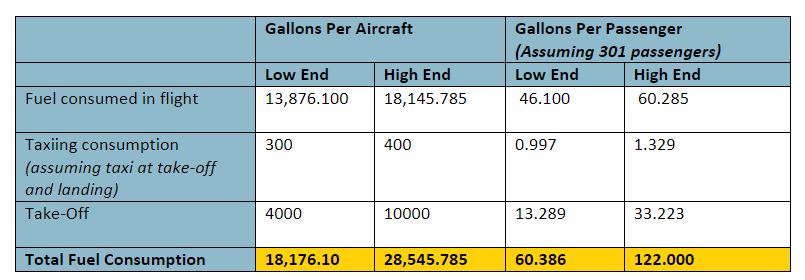This car is “green” - Why context is key, especially when it comes to supply chain resilience10/25/2022
And not just literally green in colour! True, it’s a big old boat with a V-8, that gets roughly 19 miles per gallon, and it predates modern emissions systems. But, it’s more environmentally friendly than it first appears. I’ve owned this car for 26 years. Usually it gets a thumbs up, people smile and wave. Recently however it gets some comments like, “you shouldn’t be allowed to drive that, you’re killing the earth”. This was said by a proud Electric Vehicle owner who just got back from a vacation in the UK. So how can this car be “green”? The answer is simple, and it is the same answer that applies no matter if you’re talking about politics, the environment, or the many supply chain problems we have today: Context is everything! We are bombarded daily with sensational messaging that abandons context to manipulate emotional reactions, for anything ranging from political views to your next purchase of a good or service. No matter the subject, if you’re serious about making real results, details and context matter. I’ll give an example and show how it applies to supply chain. A basic example: My ’69 Chevy Impala has driven a total of 13,000 miles in the 26 years have owned it. That averages to 500 miles per year. Antique cars don’t get around much by modern driving standards! In 13,000 miles, my car has burned approximately 684 gallons of fuel in the name of my own enjoyment. The hobby of owning and maintaining this car not only brings me joy but also challenges engineering problem solving skills, sourcing skills, and forces learning new skills (such as welding). It helps me to relax and encourages me to take time to productively de-stress. Now let's look at how that compares to a vacation to the UK Boeing advertises that a 777 averages between 150-200 gallons during taxiing and 4,000 to 10,000 gallons during take off. On average, a 777 carries 301 passengers and burns 0.013 to 0.017 gallons per passenger per mile[1] Based on this, a rough (but not at all exact) understanding of fuel burned to take a flight to the UK for the sake of comparison, can be attained. The detailed math has been provided at the end but the chart below shows the summary data. Distance to UK (Toronto Pearson to London Heathrow) 7 hours 5 minutes, 5707 kilometers (converted to miles = 3546.165)[2] If I add up total consumption of fuel over the entire lifetime of my car (53 years, 133,000 miles averaging 19 mpg) including the first 20 years when it was a daily driver, it equals roughly 7,000 gallons, still less than half of a one-way trip to the UK by the lowest estimates! Without context, my car of course looks like it is causing more harm to the environment compared to a fully electric car. However, when looking closer at fuel consumption of our recreational habits, a one-way trip across the ocean caused approximately 27 times as much impact in just a few hours (41 times if you rely on the high estimates) than my car has in 26 years. But wait! You’re comparing personal use with an entire aircraft you might say. Well, the data from above shows us that a single passenger accounts for between 60 and 122 gallons one way. By the time my friend makes his return trip, he’s burned the equivalent amount of fuel that my vintage car would use in 4.5 years on the low side, 9.3 years on the high side! However, if you consider how many planes are in the air at any given time, vs vintage cars on the road, the CO2 contribution of old cars becomes so miniscule that it is statistically irrelevant to the global (or local) problem. To be clear, I am not suggesting people should not travel. Nor am I suggesting they shouldn’t feel good about owning an EV. But I am suggesting everyone should look at their own individual lifestyles and decide what impact they are having, what benefits they receive from it, and what is the compounded effect. There are no one-size fits all solutions, context is key and without seeing the whole picture we are basing judgements on assumptions that are likely to be false. Why is Context Important for Supply Chain Resiliency? We are living in a world of endless disruption, challenges, and problems. And just like environmental and political concerns, the problems are very real but many solutions are often “shell games” of selectively reporting and concealing different aspects of the problem, and almost always with a spin. So how can you build a supply chain that is agile and resilient? With context! Dr. W Edwards Deming, a world-renowned engineer and statistician, would refer to this as appreciating and understanding the system in which your business operates. There are two principles of systems I want to highlight:
It is important to note that tampering is the inevitable result of making changes - no matter how big, small, or well intentioned - while not understanding the system fully and quantitatively. And two concepts that go along with these are:
For any business with a supply chain (which is pretty much any business!), you cannot understand your own system from within. It requires persons and/or data from outside your system to detail out the realities, unbiased by internal interpretations, goals, preferences/beliefs, or politics. It also requires a structured approach to evaluate those realities that can stand up to scrutiny. It requires specific investigation into the business since while fundamentally all businesses have the same overall challenges (profit/loss, labour/productivity, markets) the details (context!) are what makes one fail and the other succeed. No two companies have the same details. The variables in every system must be understood in detail to provide proper context. Without this level of attention, things get worse. Today’s supply chains are a global example of this in real time where solutions are attempted in isolation rather than considering the entire system. We are making public policies, trade decisions, staging political campaigns, throwing money at some areas while ignoring others, and we still try to do this from an isolated solution-selling point of view, not from a data-based system solution point of view. Locally, at the individual business level, (particularly Small and Medium Enterprises) surviving the day takes priority. So, in turn, as an overall system, things get worse at the local level, which in turn drives global system errors, which feeds back to the local level in a runaway feedback loop. We can’t “tamper” our way out of these challenges. And we can’t improve any system that we do not see or understand. When you see social media posts especially about supply chain that say “25% of companies have X supply chain problem” or “40% of manufacturers think Y” as an example, you know immediately it’s misleading if it doesn’t specify: what companies, in what industry, making what products, based on what commodities, in what geographies, under what trade agreements, based on what data, from what source, collected for what purpose, funded by who, etc. Because it all matters. Context is King. Beware any person or product that evades providing specific (data based) context to anything, as they are not contributing to the solution. The only way out of our biggest business challenges are straight through them, navigated by context. Further Reading
Math calculations explained Fuel consumed in flight (gallons per passenger) Low end: 0.013 x 3546.165 = 46.100 High end: 0.017 x 3546.165 = 60.285 Taxiing consumption (gallons per passenger) Low end: 150 x 2 (taxi at take off, and at landing) = 300 ÷ 301 passengers = 0.997 High end: 200 x 2 (taxi at take off, and at landing) = 400 ÷ 301 passengers = 1.329 Take off (gallons per passenger) Low end: 4000 ÷ 301 passengers = 13.289 High end: 10,000 ÷ 301 passengers = 33.223 Total consumption (gallons per passenger) Low end: Flight (46.100) + Taxiing (0.997) + Take off (13.289) = 60.386 High end: Flight (60.285) + Taxiing (1.329) + Take off (33.223) = 122.000 Total fuel consumed by the aircraft (gallons): Flight Low end: 0.013 x 3546.165 = 46.100 gallons per passenger x 301 passengers = 13,876.100 High end: 0.017 x 3546.165 = 60.285 gallons per passenger x 301 passengers = 18,145.785 Taxiing (gallons) Low end: 150 gallons x 2 (taxi at take off, and at landing) = 300 gallons High end: 200 gallons x 2 (taxi at take off, and at landing) = 400 gallons Take off (gallons) Low end: 4000 gallons High end: 10,000 gallons Total fuel consumed by aircraft (gallons) = Low end: Flight (13,876.100) + Taxiing (300) + Take off (4000) = 18,176.10 High end: Flight (18,145.785) + Taxiing (400) + Take off (10,000) = 28,545.785 Footnotes
[1] How Much Fuel Does a Plane Use? Executive Flyers, August 15, 2022 [2] https://www.airportdistancecalculator.com/flight-yyz-to-lhr.html [3] https://youtu.be/M2Sw751ghao Comments are closed.
|



 RSS Feed
RSS Feed